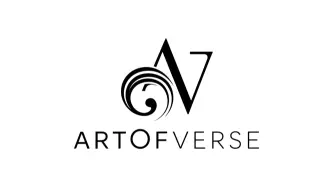AI has gone a long way in every field of life. Whether it is an artwork or any piece of writing, artificial intelligence can make any sort of content proficiently. There was a time when a single picture or a piece of art by an artist took several months and years to complete, now this task can be completed by AI in no time. It can make things that can be difficult for a human being to create but not a big deal for AI. AI-generated deepfakes create images using several tools to make them look perfect.
Besides, it is a jack of all trades. Continuous experiments are being made to enhance the quality and performance of AI, including advancements in liveness detection. Artists and designers are trying to create paintings and logos using many AI tools.
Technology Used Behind AI-Generated Images
AI can not provide content just by reading the prompt. But there is a whole procedure behind its tasking. Several technologies work when AI is given a prompt. The technologies include:
-
Machine Learning
Machine learning is a process that allows the system to learn by using many examples and samples. The system doesn’t work by giving instructions all the time but it works and learns over time using a large data of samples. For example, if the system is asked to verify a person, then the system must have a large database containing several faces, and then it will compare the data of that particular person with a database and verify the identity.
Moreover, the neural network is also one of the technology behind the working of AI. It works exactly like the brain. These are the layers of neurons that are mathematical operations, that work to understand provided data in detail. It learns the shapes, colors, and all the minor details in it. These details are then stored in the system and later used by the system to create several other contents.
-
GAN (General Adversarial Networks)
It is a machine-learning model that allows the system to create content or images using two parts i.e. generator and the discriminator. The generator makes the images after understanding the prompt given to the system. After the completion, the generator makes sure that the image is real-looking or not. The generator always fools the discriminator and makes it think that the image is fake. The discriminator tries its best to make it real-looking.
Models Involved in Creating AI-Generated Images
Several image-generating models are being used for various purposes all over the world. Some of them are Dall-E, MidJourney, and Stable Diffusion. Here is a brief description of these models given below:
-
Dall-E
This advanced model is thrived by OpenAI. It works by providing a written prompt to an AI system. The written description can be turned into a picture by Dall-E. Anything that needs to be converted into a picture whether it is a prompt or a thought, can be created by this AI model. Several AI video detectors can create videos by providing them with a written prompt.
-
MidJourney
MidJourney is another AI model that makes more realistic images based on abstract and other images of otherworldly creatures. These also include some of the dream-like pictures that can’t be created by a human. It works in collaboration with AI to refine the created pictures to look more realistic. AI deepfakes also use this technology to make it indistinguishable between real and fake images.
-
Stable Diffusion
Unlike other image-creating models, this model can make realistic pictures and work of minor details using the feedback of the user. It can be controlled by the user during the process. If the user has given a prompt and the picture is not up to the mark then the user can ask the system to make it more accurate and refine it until the image looks real.
Conclusion
With the progression of time, AI will likely evolve and create more refined pictures that will be difficult to distinguish between AI-generated and human-created. Advancements in all the above-mentioned technologies and image-generating models can make the process more realistic and up to the mark. Deepfake detection technologies will likely fail in discriminating between the real and fake. It can be seen in more diverse fields with more enhanced features and image quality. As AI has become more common and is being used in several industries then there must be the addition of some other new aspects that can add to the better quality of the images. Despite the benefits it provides to the user, AI will likely be refined in terms of ethical considerations like it should not misuse the content.

